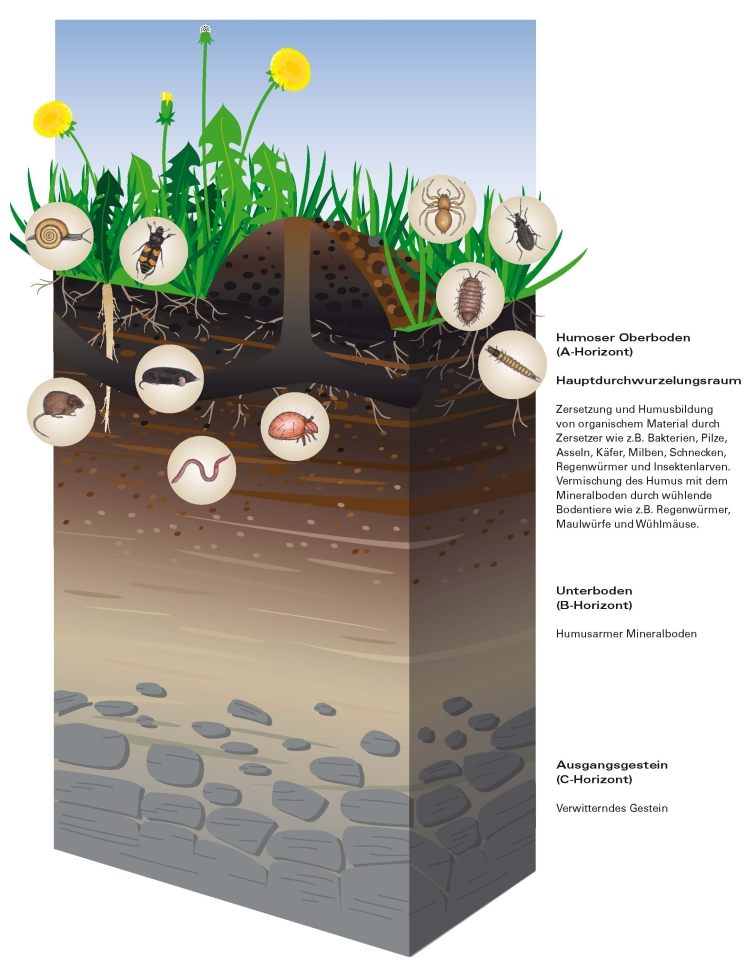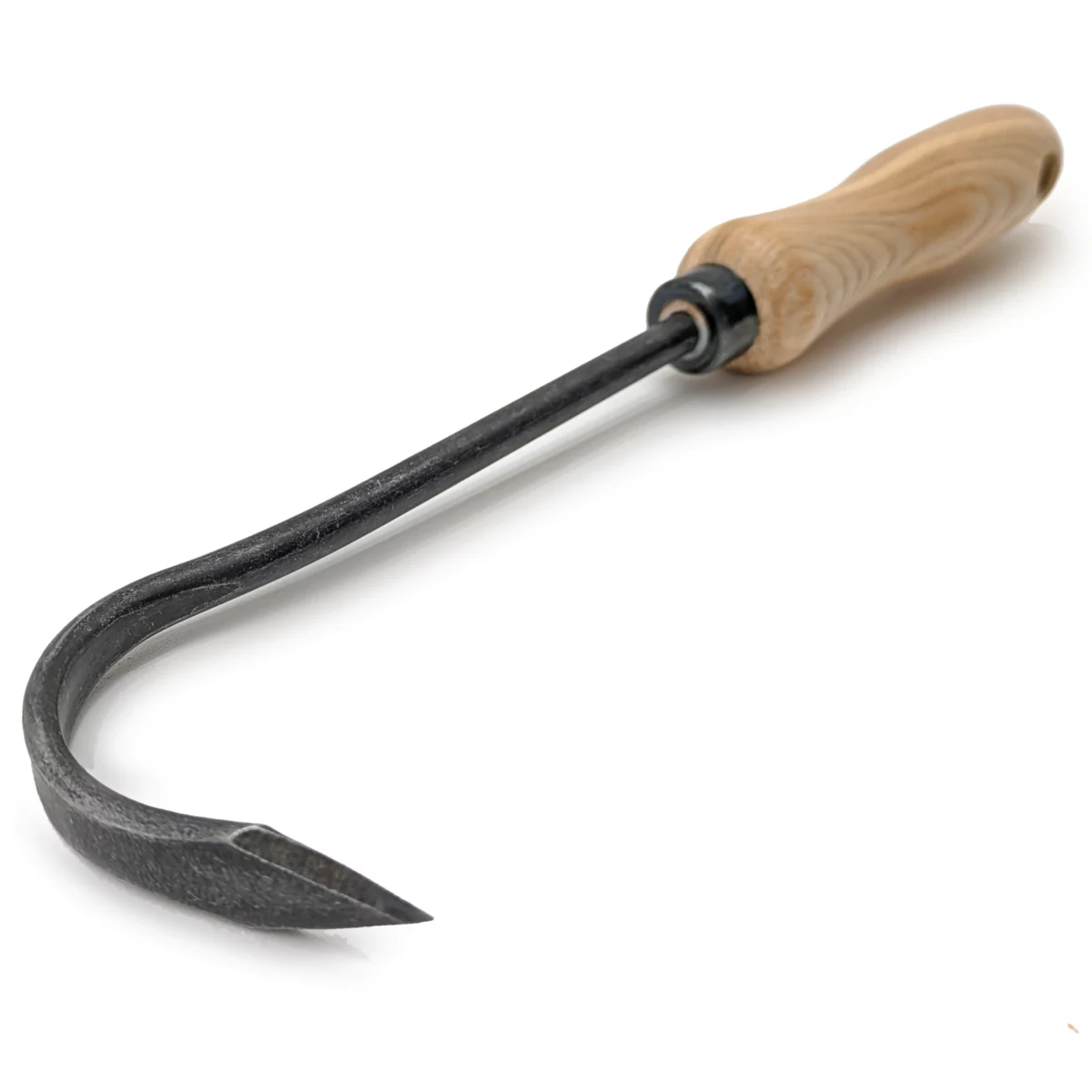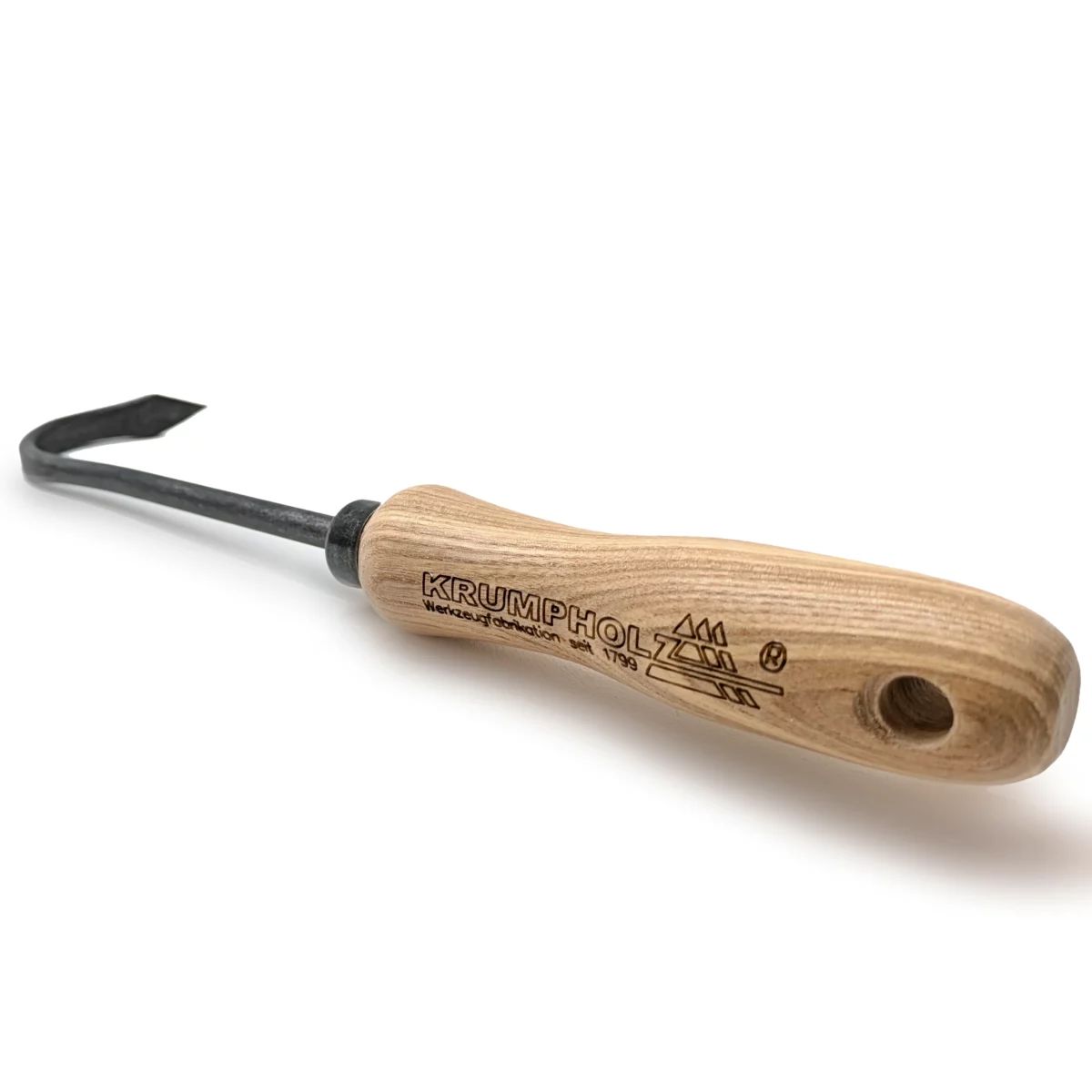Sauzahn application
The sow’s tooth
is used for loosening the soil and for weed control. A sickle-shaped tine is mounted on its handle, which is vaguely reminiscent of a boar’s canine tooth. The tine should be forged into a small blade at the tip.
The natural layering
of the soil can be divided into three areas. The topsoil, the subsoil and the parent rock.

Source: Bavarian State Office for the Environment; animal drawings by Dr. Gerhard Laukötter;
https://www.lfu.bayern.de/boden/erdausstellung/bodenaufbau/pic/fzmd_bodenaufbau_gr.jpg
The topsoil is suitable for plants
most important layer for plant growth. There, the humus mixes and combines with mineral components. The humus consists of decomposed material of flora and fauna. The topsoil is decomposed and transformed by fungi and bacteria and mixed with the mineral components by earthworms. A healthy topsoil with a high humus content is critical for vital plant growth.
The subsoil mainly contains
mineral material. Weathered rock, sand and materials washed in from the topsoil characterize the subsoil. Humus is hardly present there.
The source rock consists of
almost exclusively from non-weathered rock layers. This subsoil forms the replenishment for soil development.
Why work the floor with a sow’s tooth?
By digging up healthy topsoil with a spade or fork, organic life is transported into the oxygen-poorer subsoil. Many of these organisms cannot exist there and die. The soil loses vitality and nutrients.
When ripping up the soil with the sow tooth, the topsoil is not transported into deeper soil layers. Earthworms, fungi and bacteria remain and continuously increase the humus content. This process can be supported and enhanced by appropriate organic fertilization.
Tilling the soil with the sow tooth
is significantly easier, more energy-saving and faster than digging with a spade or digging fork. First, the soil should be cleared of weeds, e.g. by raking with a cultivator or weeder.
After removing the weeds, you need to pull the sow tooth through the bed in intersecting paths. The distance between the rows should be from 15 to 25 centimeters.
When to work the bed with the sow’s tooth?
The bed should be worked either before or after the winter. Optimal is the processing before the winter. The frost causes the cracked soil to crumble optimally. However, spring processing before the first sowing / planting is also fine. In the spring, your own motivation is often higher.
Which sow’s tooth for which bed?
For raised beds, use our small sow’s teeth no. 1424, no. 1307 or no. 1309 from Krumpholz.
For ground level beds, our large hammer-forged sow tooth No. 1061 or sow tooth No. 1306 is optimal.



































